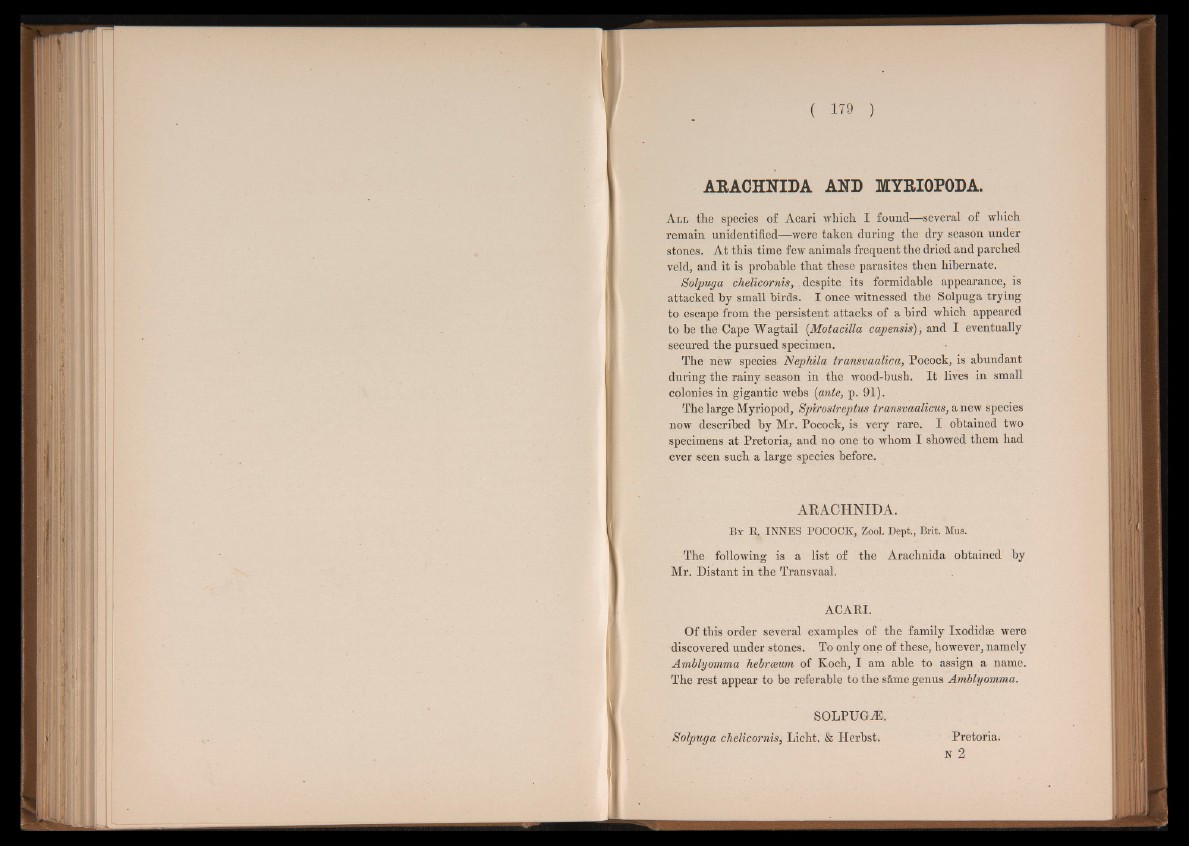
ill ■
H I
■I
mi
HI
i :
I f I •
I I
I
L_
ARACHNIDA AND MYRIOPODA.
A l l the species of Acari which I found— several of which
remain unidentified— were taken during the dry season under
stones. At this time few animals frequent the dried and parched
veld, and it is probable that these parasites then hibernate.
Solpuga chelicornis, despite its formidable appearance, is
attacked by small birds. I once witnessed the Solpuga trying
to escape from the persistent attacks of a bird which appeared
to be the Cape Wagtail [Motacilla capensis), and I eventually
secured the pursued specimen.
The new species Nephila transvaalica, Pocock, is abundant
during the rainy season in the wood-bush. It lives in small
colonies in gigantic webs {ante, p. 91).
The large Myriopod, Spirostreptus transvaalicus, a new species
now described by Mr. Pocock, is very rare. I obtained two
specimens at Pretoria, and no one to whom I showed them had
ever seen such a large species before.
ARACHNIDA.
B y R. INNES POCOCK, Zool. Dept., Brit. Mus.
The following is a list of the Arachnida obtained by
Mr. Distant in the Transvaal.
ACARI.
Of this order several examples of the family Ixodidse were
discovered under stones. To only one of these, however, namely
Amblyomma hebrceum of Koch, I am able to assign a name.
The rest appear to be referable to the s&me genus Amblyomma.
SOLPUGA1.
Solpuga chelicornis, Licht. & Herbst. Pretoria.
N 2